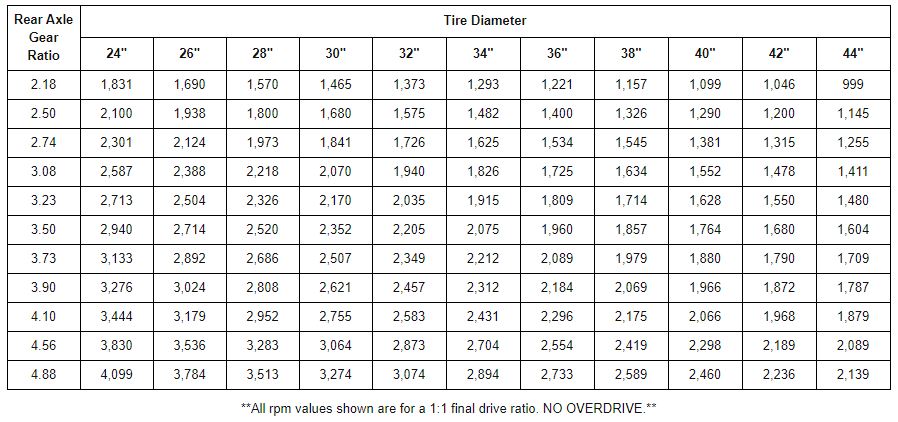Q:
What is the ideal cruising RPM, and why is it important?
A:
Cruising rpm—that is, the speed at which your engine’s crankshaft rotates at a given sustained speed—has an impact on fuel mileage and engine durability. Getting it right will allow you to enjoy your vehicle for years to come.
If the rpm is too high, your engine will burn more fuel, generate more heat, and wear down faster. An rpm that is too low can result in poor performance and cause the torque converter to slip, also leading to excessive heat.
Finding an rpm speed that coincides with the sweet spot of your camshaft will give you good power and throttle response.
You should consider your cruising rpm if you want to change tire size or ring and pinion gears. You should also take it into consideration when buying a torque converter. For the best performance, your cruising rpm should be at or above your converter stall speed.
The chart below shows the rpm at 60 mph, based on gear ratio and tire height:

If you want to use a different gear ratio, tire size, or vehicle speed, our friends at Summit Racing have a handy gear ratio calculator worth looking at.

I thought this article was going to be about how to determine your optimal cruising RPM. Disappointed.
[…] Q: What is the ideal cruising RPM, and why is it important? A: Cruising rpm—that is, the speed at which your engine’s crankshaft rotates at a given sustained speed—has an […] Read full article at http://www.onallcylinders.com […]
Use a vacuum gauge. The RPM where you have the best part throttle vacuum will be the best cruise RPM. Gear (And tire.) your combo to turn that RPM at the speed you wish to cruise.
Well, whats the conclusion on the best cruising speed given that we now know the RPM at 60MPH with known rear end ratio and tire size? Are you saying that 60MPH is the best cruising speed for all these variables?